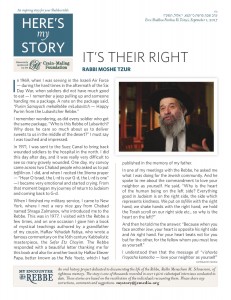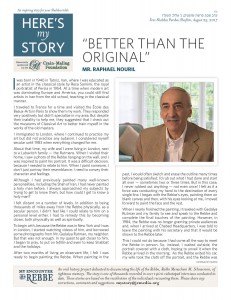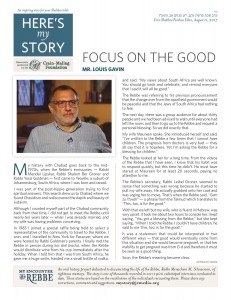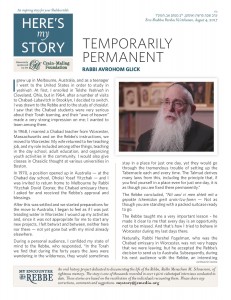It’s Their Right
In 1969, when I was serving in the Israeli Air Force – during the hard times in the aftermath of the Six Day War, when soldiers did not have much good to eat – I remember a jeep pulling up and someone handing me a package. A note on the package said, “Purim Samayach mehaRebbe miLubavitch – Happy Purim from the Lubavitcher Rebbe.”
I remember wondering, as did every soldier who got the same package, “Who is this Rebbe of Lubavitch? Why does he care so much about us to deliver sweets to us in the middle of the desert?” I must say I was touched and impressed.
In 1971, I was sent to the Suez Canal to bring back wounded soldiers to the hospital in the north. I did this day after day, and it was really very difficult to see so many gravely wounded. One day, my convoy came across two Chabad people who asked us to put teffilin on. I did, and when I recited the Shema prayer – “Hear O Israel, the L-rd is our G-d, the L-rd is one” – I became very emotional and started crying. From that moment began my journey of return to Judaism and coming back to G-d.
When I finished my military service, I came to New York, where I met a very nice guy from Chabad named Shraga Zalmanov, who introduced me to the Rebbe. This was in 1977. I visited with the Rebbe a few times, and on one occasion I gave him a book of mystical teachings authored by a grandfather of my cousin, HaRav Yehudah Fatiya, who wrote a famous commentary on the 16th century Kabbalistic masterpiece, the Sefer Etz Chayim. The Rebbe responded with a beautiful letter thanking me for this book and also for another book by HaRav Eliezer Papa, better known as the Pele Yoetz, which I had published in the memory of my father. (more…)









